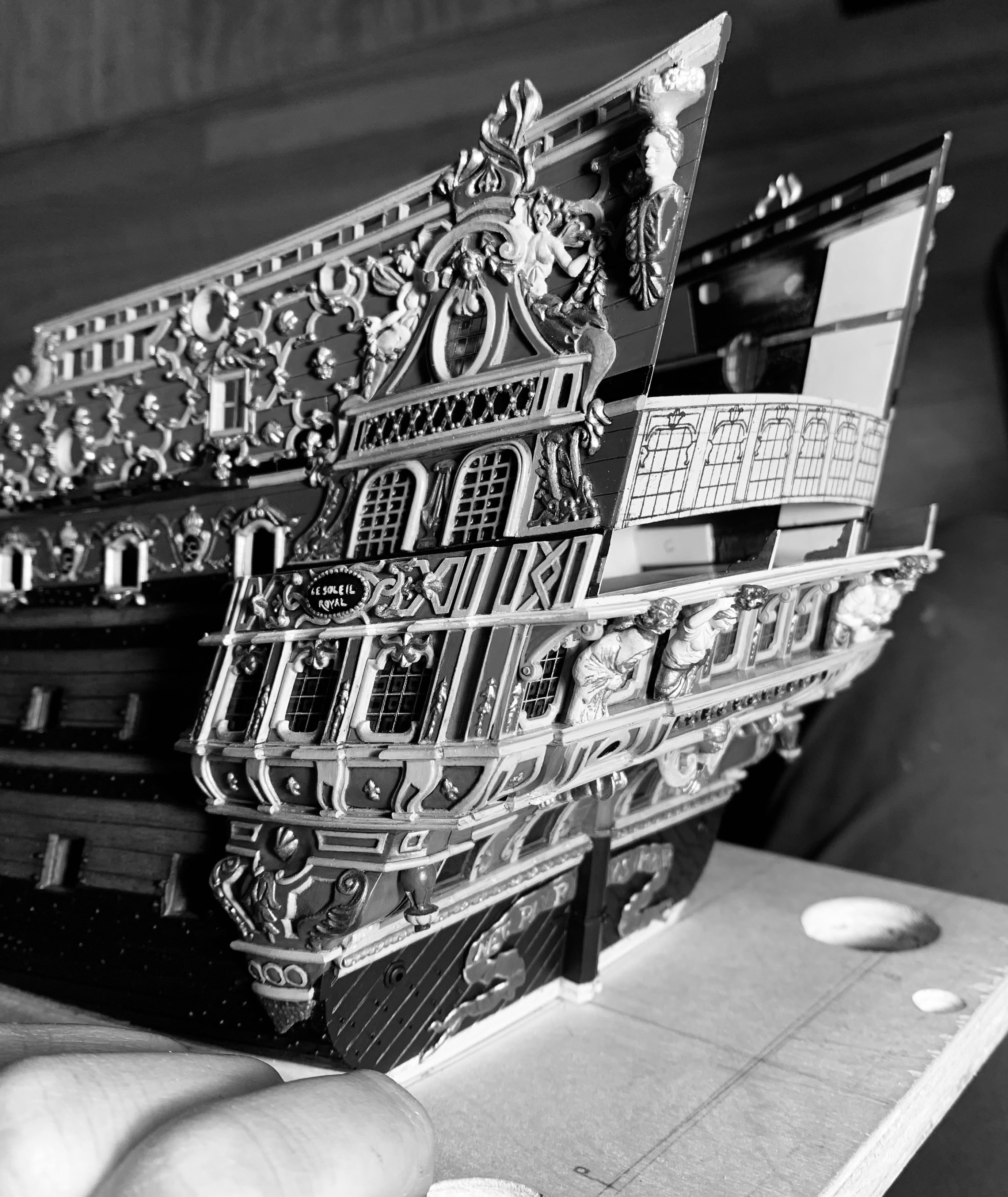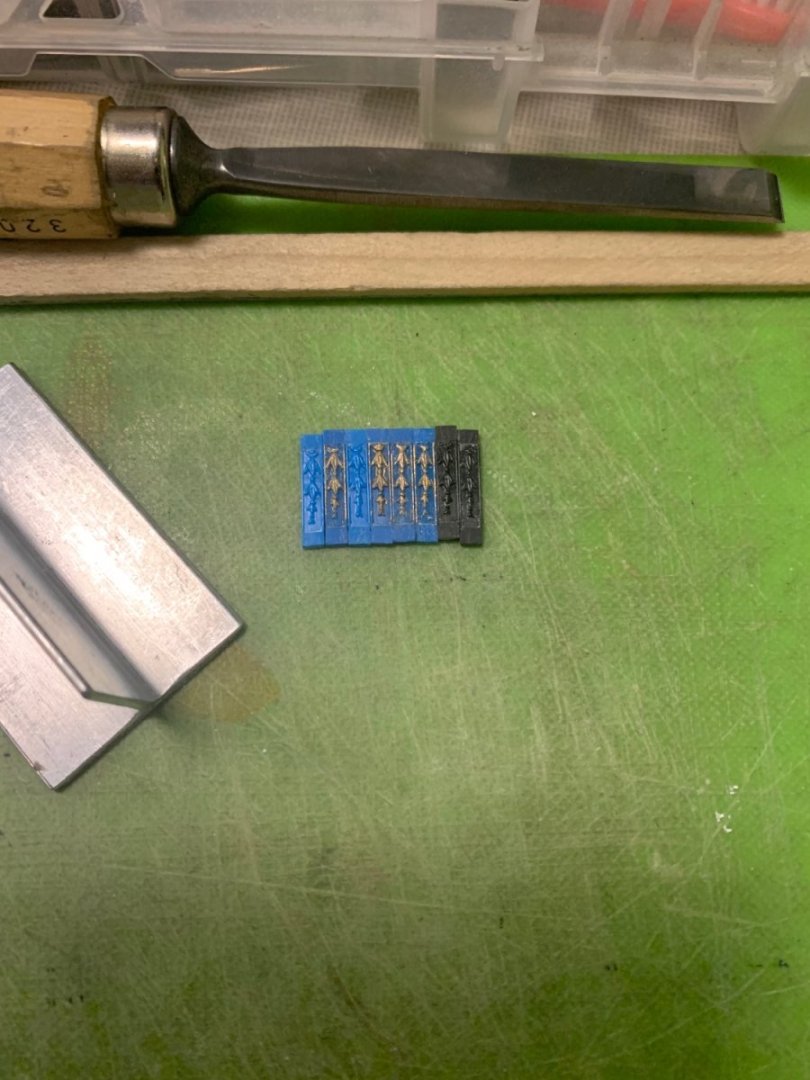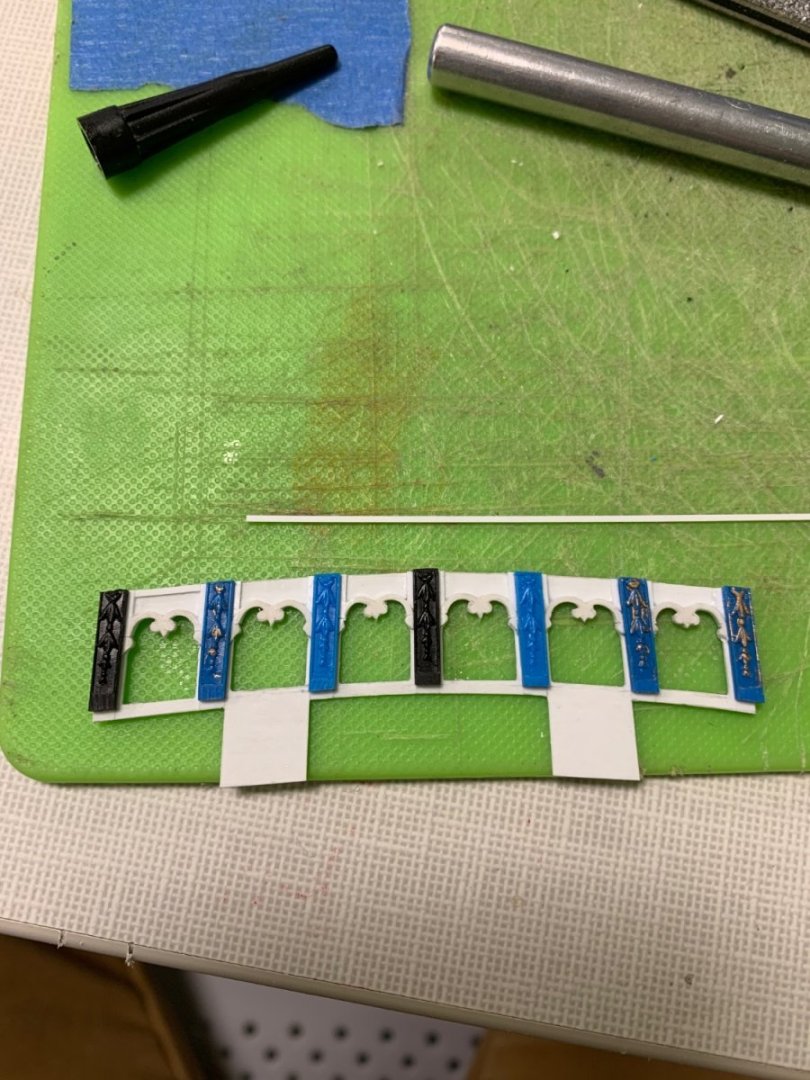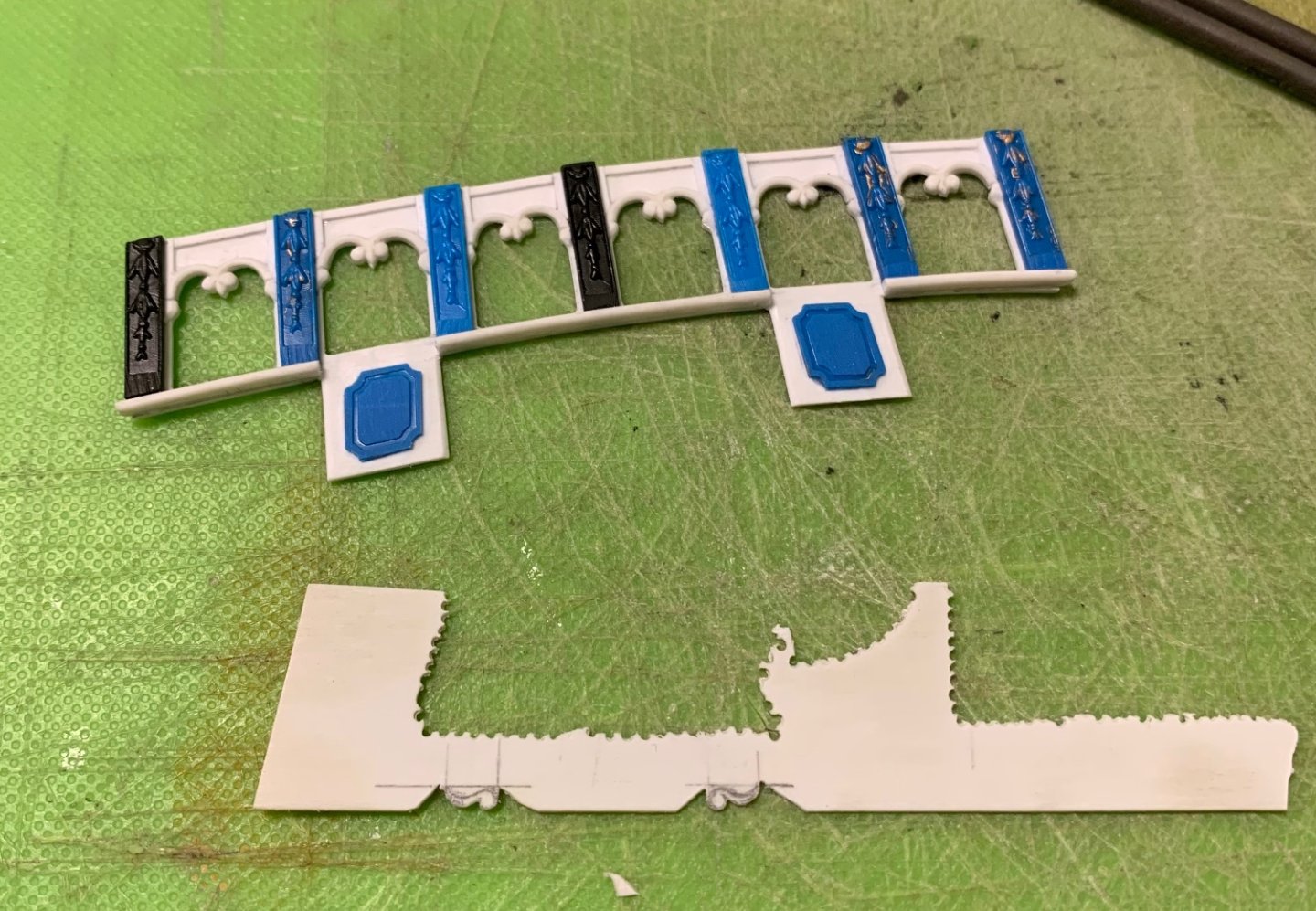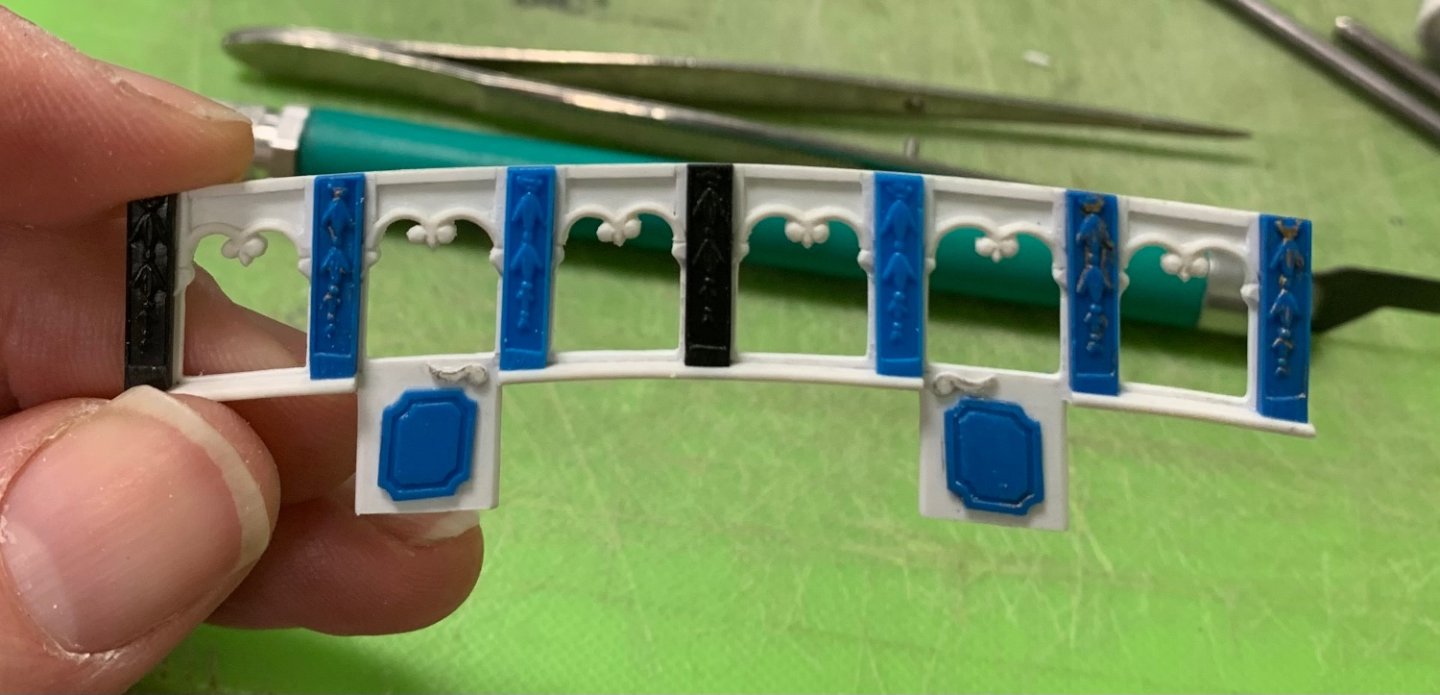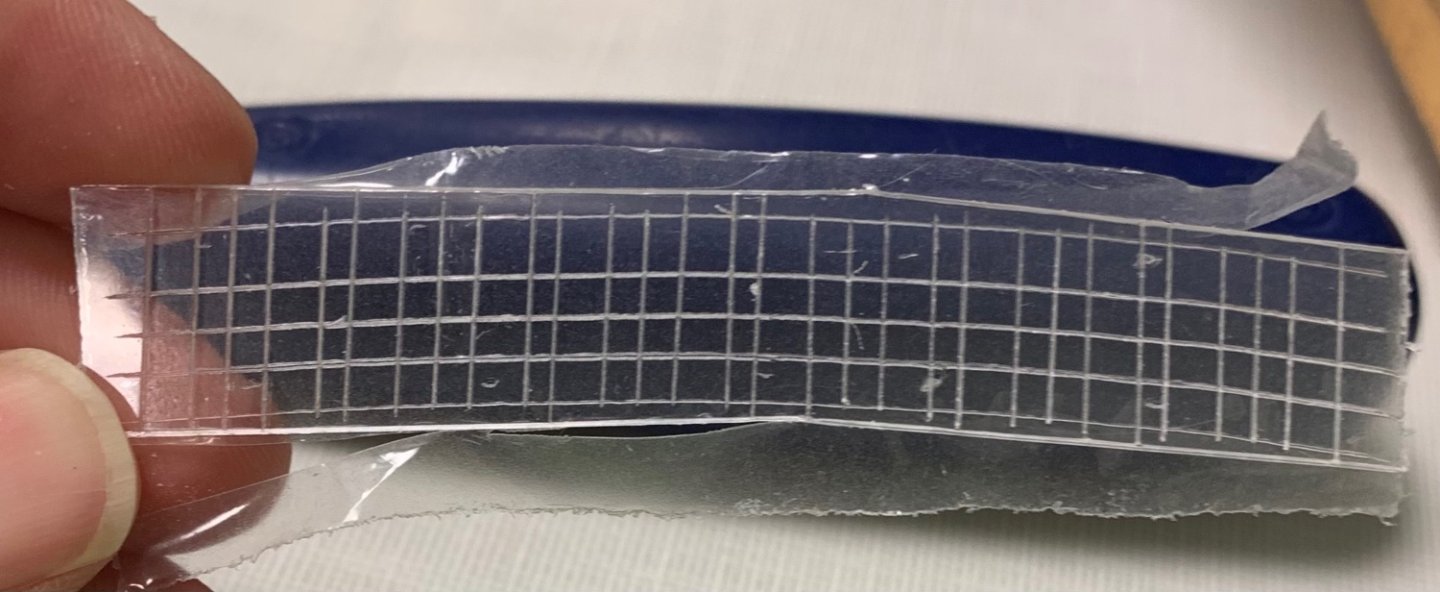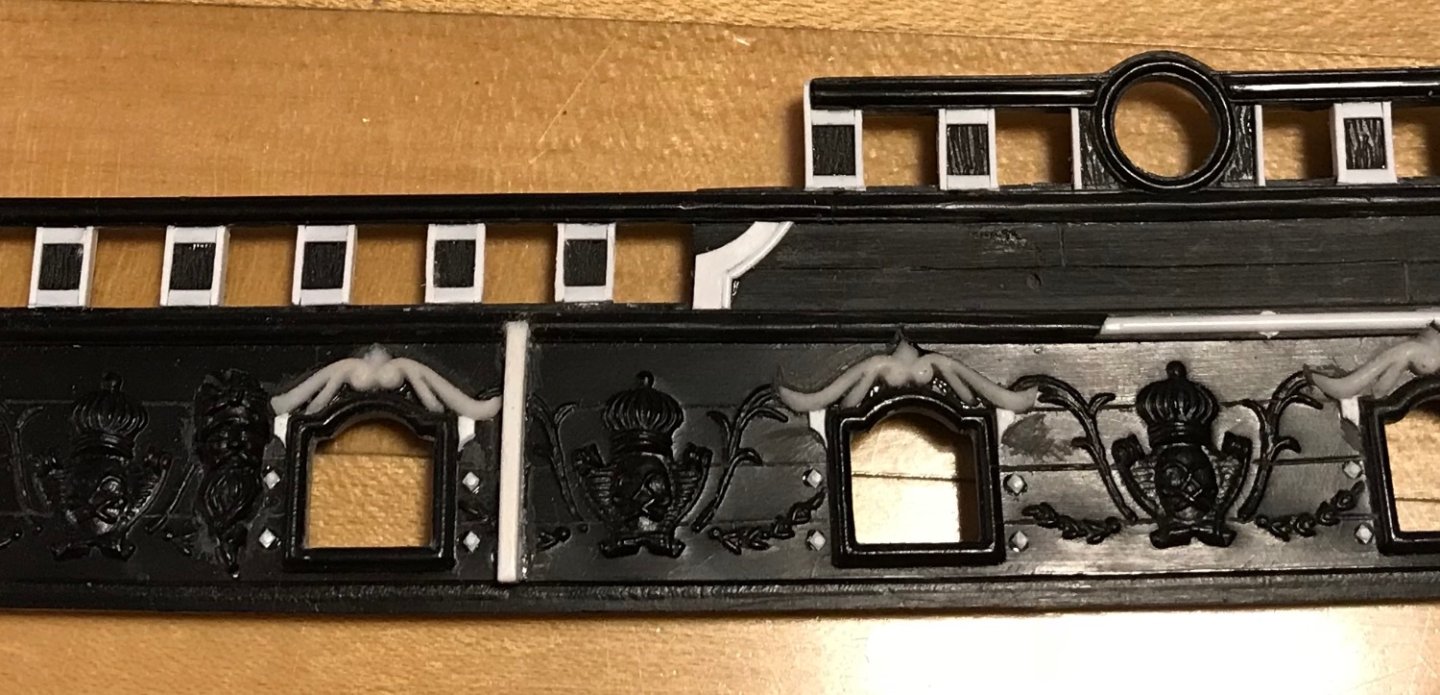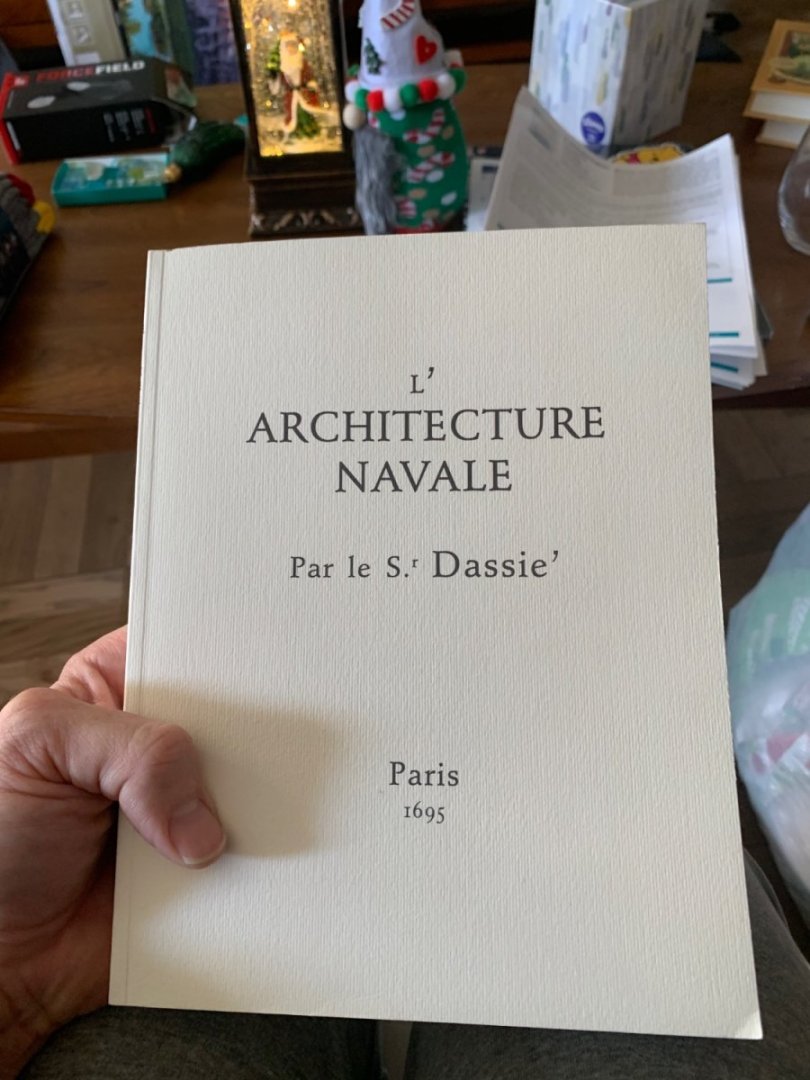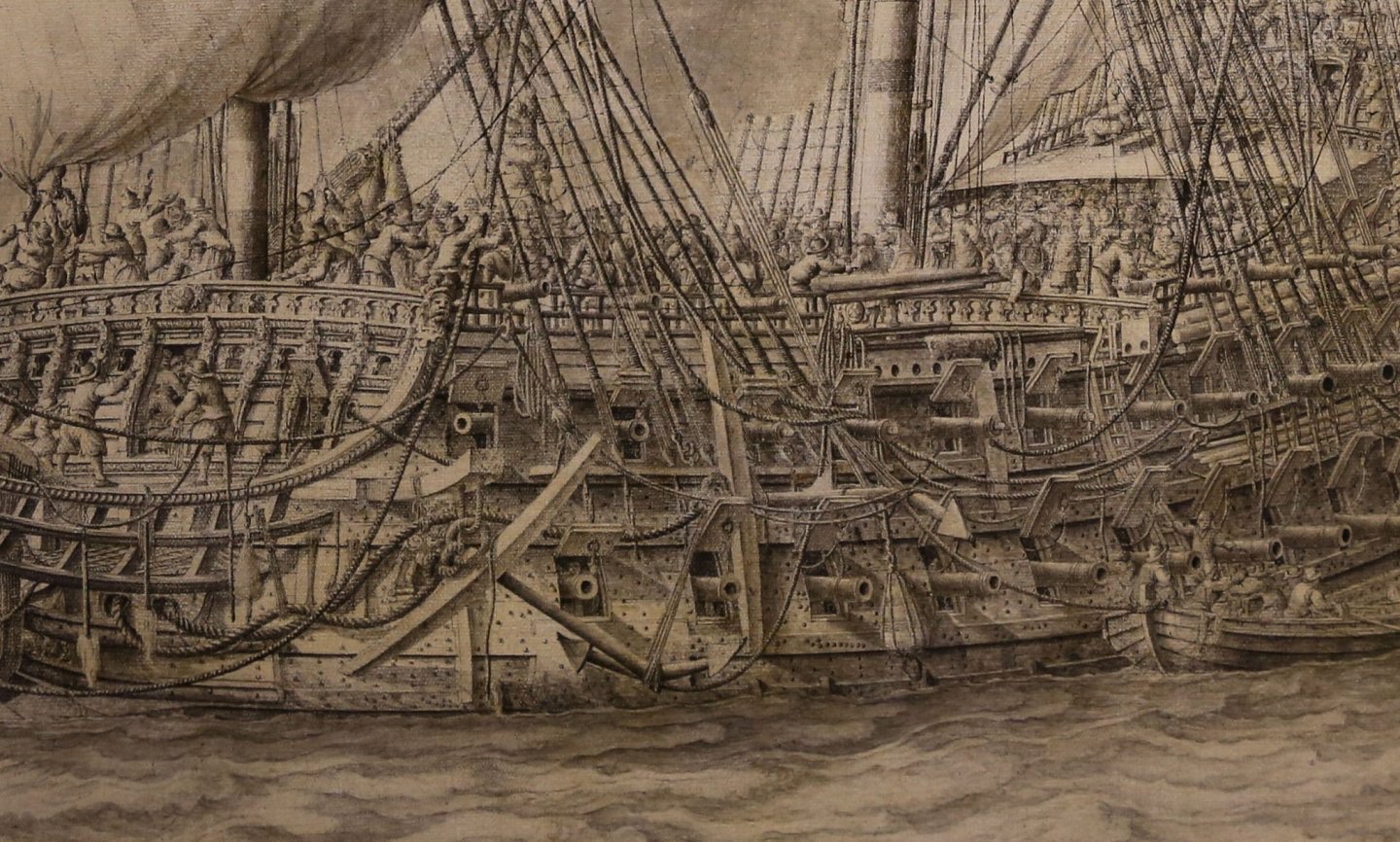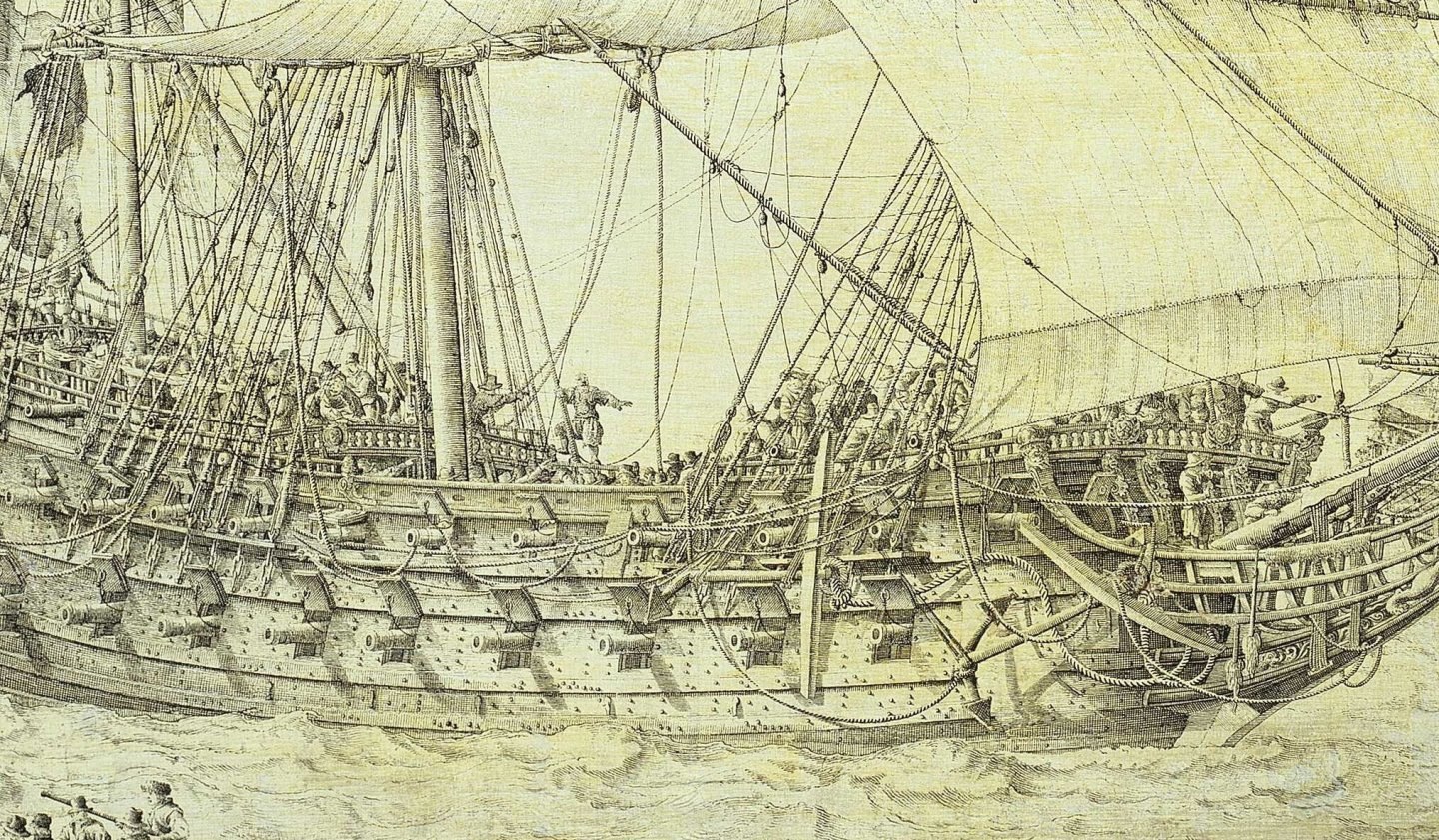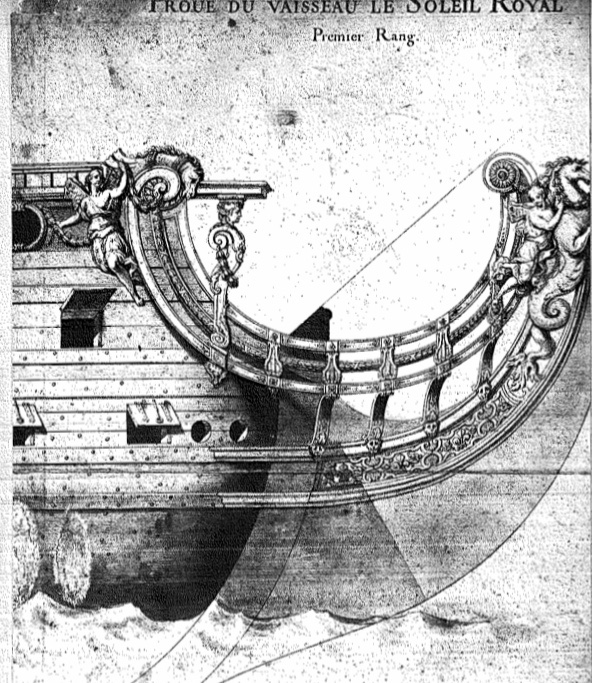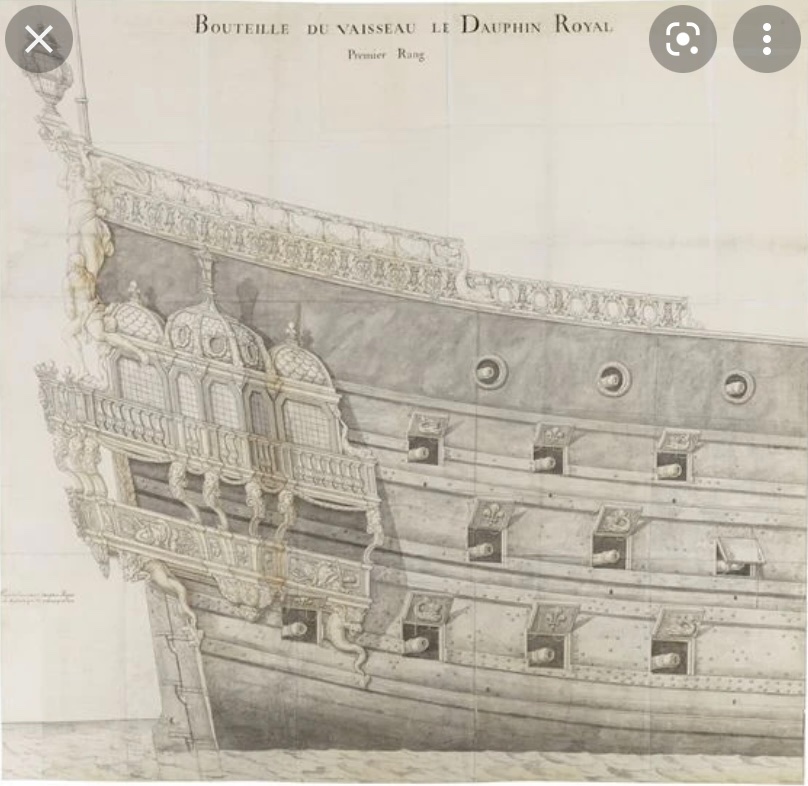-
Posts
3,292 -
Joined
-
Last visited
Content Type
Profiles
Forums
Gallery
Events
Everything posted by Hubac's Historian
-
Hi Bill - those holes in the upper main wale are for the plastic kit eyebolts that the “chains” attach to. I lowered my chanels down to this upper main wale because that would have been the correct location in the late 1680’s. Where Heller has placed the Channels is correct for 1669. So I filled those holes and my bolt pattern remained the same, except for where the channels are located.
- 1,508 replies
-
- Le Soleil Royal
- Heller
-
(and 1 more)
Tagged with:
-
I prefer to save my sea legs for real action.
- 1,508 replies
-
- Le Soleil Royal
- Heller
-
(and 1 more)
Tagged with:
-
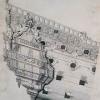
Roter Löwe 1597 by Ondras71
Hubac's Historian replied to Ondras71's topic in - Build logs for subjects built 1501 - 1750
Genius milling idea for the deadeye groove! -
Thank you, Greg! I wish the same for you and your family.
- 2,696 replies
-
- heller
- soleil royal
-
(and 9 more)
Tagged with:
-
It’s been a pretty solid week. Headrail painting continues in the evenings. I also finished up the window plate detailing. I had trouble making the raised panel framing out of a single piece of .020 styrene, as I had done before. Rather than make myself crazy, I cut out and used the curved lower portion of the frame, and then I pieced-in the straight sides and tops from strip plastic: I cut raised panels for the doors from the stock stern plate. For the door handles, I had run out of scroll castings, so I just made a pair from sheet styrene: Completed window plate: The acetate windows before greying-in the leading and trimming to size: I hope everyone enjoys a happy and safe new year! All the best, Marc
- 2,696 replies
-
- heller
- soleil royal
-
(and 9 more)
Tagged with:
-
I have never been to Times Square for New Years Eve and I can not imagine why anyone would want to subject themselves to that. I don’t even like Times Square on a regular weekday. Nope - I’ll be at home all weekend doing absolutely nothing that I don’t want to do. This should translate to plenty of model time! Agreed - Buffalo got it bad. Happy New Year, Bill!
- 1,508 replies
-
- Le Soleil Royal
- Heller
-
(and 1 more)
Tagged with:
-
Nope - we’ll still be here. My log fluctuates between 44 and 49. Some people come and go, and some come back again. I think the old saying applies; you can make some people happy some of the time.
- 1,508 replies
-
- Le Soleil Royal
- Heller
-
(and 1 more)
Tagged with:
-
Hi Bill! The upper and lower port enhancements were carved from 1/16” styrene sheet. Each half of the dolphin drift rail end caps was also carved from 1/16” sheet. It wasn’t strictly necessary to glue an inner half for these ornaments, for the inner bulwarks, but you will have to carve left and right side masters for both port and starboard, anyway, so the little bit of extra work is worth it, IMO. My #1 piece of broad advice is: take your time! Obviously, I took the upper bulwarks to an extreme, but I had developed a very clear idea of what I wanted it all to look like, and I didn’t really care how long it took because I knew these modifications would completely transform the kit. Start to finish, I probably spent a little more than a year modifying these 4 upper bulwark pieces and that is only up to and including the frieze. The upper quarter galleries probably took another 6 months to make and assemble. Take your time, and #2 piece of advice: don’t be afraid to erase your drawings and throw away unsatisfactory attempts for the masters; if you’re not that excited about your port enhancement master carvings, you really won’t be happy when they are repeated 28 times along the main deck guns. #3: Relative scale and proportion are everything; maybe your carving/detailing skills are not yet advanced, but as long as the element is proportional and the overall outline or shape is good, then the parts will look good. This is where a willingness to draw and re-draw will serve you well. My advice: obtain some drafting vellum. You can draw and erase on vellum almost indefinitely and it won’t disintegrate. Make a photocopy of one of the forward upper bulwarks. You may have to adjust the contrast a bit, so that you can clearly see the size and shape of the main deck ports. There will be some distortion in the copy, but it is negligible and won’t hinder the process. Then, blue-tape a patch of vellum over a port opening, for example, and you will be able to read the exact size and shape of the port opening through the vellum. You’ll also be able to see the relative distance between the top of the ports and the drift rail above. This is critical because you want your port enhancements to fit comfortably in-between. It is important to use the forward bulwark for this because the available space tapers more narrowly from aft to forward. I based my master on the aft bulwark, where the space is wider, and I had to let the very tops of my forward enhancements into the drift rails. This isn’t terribly noticeable, but it is one thing I would do differently. Another thing to be aware of is that despite using thin CA (just common Crazy Glue brand, at the time) to mount the masters to the plywood, there is going to be a lip of CA all around the carving, once the glue dries, and this extra glue/squeeze out, will affect the sharpness of your moulds all around the perimeter. I learned pretty quickly that it was a good idea to gently scrape level this glue-lip with the corner of a very sharp chisel and-or EXACTO knife. A main reason why my ornaments look good is because I spent an enormous amount of time completely eliminating the background, but also scraping each moulded piece so that all the surfaces and creases were more clearly defined. Right out of the mould, the parts will look pretty good, but the extra working of surfaces - kind of like the way a metal smith chases brass castings of furniture hardware - really makes them stand out. Lastly, before I mount my carving masters, I first painted the mounting surface with thin CA and sanded that after dry. It seals the surface of the plywood and smooths over any grain structure or imperfections in the surface veneer.
- 1,508 replies
-
- Le Soleil Royal
- Heller
-
(and 1 more)
Tagged with:
-
Thank you so much Mark! I hope whatever personal challenges you are facing, they have not been overwhelming. I am quite happy to see the activity in your shipyard, lately. Yours is among rhe cleanest and most inspiring builds around!
- 2,696 replies
-
- heller
- soleil royal
-
(and 9 more)
Tagged with:
-
It is a compliment well received, Bill. I am very glad that you are able to pull value from my build-log.
- 1,508 replies
-
- Le Soleil Royal
- Heller
-
(and 1 more)
Tagged with:
-
Thank you, Henry! I hope you had a Merry Christmas, yourself!
- 2,696 replies
-
- heller
- soleil royal
-
(and 9 more)
Tagged with:
-
The path to enlightenment and a conjectural SR 1670 begins, in earnest, right here: Merry Christmas everyone! Have a happy and safe holiday.
- 2,696 replies
-
- heller
- soleil royal
-
(and 9 more)
Tagged with:
-
Right now, it’s 46 degrees in New York. By midnight, it will drop to 11.
- 1,508 replies
-
- Le Soleil Royal
- Heller
-
(and 1 more)
Tagged with:
-
The snipped bolt heads look perfect under paint. Your technique worked really well. Now, hurry out of the shipyard!
- 1,508 replies
-
- Le Soleil Royal
- Heller
-
(and 1 more)
Tagged with:
-
Many thanks, John! I wish a happy and healthy holidays for you and tour family.
- 2,696 replies
-
- heller
- soleil royal
-
(and 9 more)
Tagged with:
-
I wish the same for you and your family Bill. Happy Holidays!
- 1,508 replies
-
- Le Soleil Royal
- Heller
-
(and 1 more)
Tagged with:
-
What you’re doing should be just fine, Bill.
- 1,508 replies
-
- Le Soleil Royal
- Heller
-
(and 1 more)
Tagged with:
-
Yes, in this regard I have chosen to bolt the wales more regularly, as I have seen in contemporary portraits of French ships. Herbert primarily modes the Dutch fleet, but even these Van de Velde portraits of Dutch ships show more consistent bolting of the wales: Bow of SR: Stern of DR:
- 1,508 replies
-
- Le Soleil Royal
- Heller
-
(and 1 more)
Tagged with:
-
The rail and buttressing knees look fantastic! It is amazing to me that the kit leaves out such basic things as the stairways between decks. Yours really capture the reverse-curve Dutch style.
-
In your present situation, Bill, I would simply sand your bolt-rods down to a uniform height above the wales. In a previous post, I joked that 1/64” doesn’t matter, but that’s really about what you are aiming for, here; if it is just perceptible to your eye, it will be twice-so, under paint. Paint will also soften the top of your bolt heads, and to some degree, add to the softer domed appearance. Go for a light 1/64”.
- 1,508 replies
-
- Le Soleil Royal
- Heller
-
(and 1 more)
Tagged with:
About us
Modelshipworld - Advancing Ship Modeling through Research
SSL Secured
Your security is important for us so this Website is SSL-Secured
NRG Mailing Address
Nautical Research Guild
237 South Lincoln Street
Westmont IL, 60559-1917
Model Ship World ® and the MSW logo are Registered Trademarks, and belong to the Nautical Research Guild (United States Patent and Trademark Office: No. 6,929,264 & No. 6,929,274, registered Dec. 20, 2022)
Helpful Links
About the NRG
If you enjoy building ship models that are historically accurate as well as beautiful, then The Nautical Research Guild (NRG) is just right for you.
The Guild is a non-profit educational organization whose mission is to “Advance Ship Modeling Through Research”. We provide support to our members in their efforts to raise the quality of their model ships.
The Nautical Research Guild has published our world-renowned quarterly magazine, The Nautical Research Journal, since 1955. The pages of the Journal are full of articles by accomplished ship modelers who show you how they create those exquisite details on their models, and by maritime historians who show you the correct details to build. The Journal is available in both print and digital editions. Go to the NRG web site (www.thenrg.org) to download a complimentary digital copy of the Journal. The NRG also publishes plan sets, books and compilations of back issues of the Journal and the former Ships in Scale and Model Ship Builder magazines.

